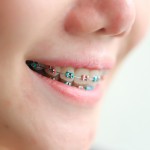
Orthodontic treatment of malocclusion involving an extraction vs non-extraction approach has been a hotly debated issues for decades with no clear consensus.
This scoping review aimed to examine study reports published in the scientific literature comparing orthodontic treatment undertaken with and without the extraction of premolar teeth. The specific objectives were to
- quantify the extent of the scientific literature,
- outline the main areas of primary outcomes reported,
- summarise the study methods, and
- propose a way forward.
Methods
A review protocol was placed on the Open Science Framework. Searches were conducted in Medline, Web of Science Core Collection, Web of Science Medline, Cochrane Library and Google Scholar databases. Non-English language tiles and abstracts were not translated. Two reviewers independently selected studies with disagreements being resolved by an independent third reviewer. Clinical studies of orthodontic treatment with premolar extraction compared with no premolar extraction involving≥20 participants of any design, including cross-sectional, cohort, case-control, randomized, prospective or retrospective, observational or interventional were considered.
Results
- 399 articles were included.
- 8 main areas of research reported in the articles as shown in the table below.
| Research area | No. of studies (%) |
| Aesthetics, including facial profile or cephalometric changes. | 147 (36.8%) |
| Occlusal changes, including stability. | 105 (26.3%) |
| Eruption of maxillary lateral and central incisors | 50 (12.5%) |
| Effect on temporomandibular Joint and temporomandibular disorders | 43 (10.8%) |
| Adverse effects to the dentition, including periodontal problems, gingival recession, root resorption. | 22 (5.5%) |
| Effect on airway. | 13 (3.2%) |
| Treatment processes, including satisfaction and treatment duration | 10 (2.5%) |
| Bone height & growth. | 2 (0.5%) |
| Other. | 3 (0.7%) |
| Unclear. | 4 (1.0%) |
| Total | 399 |
- A narrative summary of the studies in these research areas was provided.
- 57 review articles were included 32 systematic and 25 non-systematic reviews.
- The most used study design was the cohort with the majority of these collecting their data retrospectively.
- A summary of the study designs included is shown in the table below.
| Study design | No. of studies (%) |
| Randomised controlled trials | 4 (1.0%) |
| Cohort | 280 (70.2%) |
| Case-control | 11 (2.8%) |
| Cross-sectional | 41 (10.3%) |
| Systematic review | 32 (8.0%) |
| Non-systematic review | 25 (6.3%) |
| Unclear | 6 (1.5%) |
Conclusions
The authors concluded: –
There was limited low-quality evidence that extracting premolars in orthodontic patients have a possible negative effect in 2 outcome areas and a positive effect in 1 outcome area. Most study reports were of low methodological quality, and further reviews are unlikely to provide new information. Investigators should concentrate on collecting primary data of outcomes important to patients. A protocol has been made available to help reduce methodological differences, assist future meta-analyses and increase the generalizability of findings: https://doi.org/10.17605/OSF.IO/CQ49Y .
Comments
This open access scoping review provides a high-level overview of the available literature in a hotly debated area of orthodontics. It highlights the fact that the available evidence in this area is limited and of low quality. 70% of the included studies were cohort studies but these were almost all of a retrospective nature which presents a higher risk of bias. The reviewers recommend longer term studies covering the whole length of orthodontic treatment with longer term follow up to identify possible long-term outcomes. Sample sizes of future studies need to be of sufficient size to identify clinically relevant differences and to account for withdrawals and drop-outs. There should also be more focus on patients orientated outcomes as part of developing a core outcome set for orthodontic studies (COMET).
Importantly the authors highlight that the weakness in the current literature means that additional systematic reviews (on top of the 32 identified here) are unlikely to be helpful and that the focus of attention for orthodontic researchers should be to conduct high quality primary data. To that end the authors have helpfully made available a protocol for a prospective cohort study.
Links
Primary Paper
Benson PE, Alshawy E, Fenton GD, Frawley T, Misra S, Ng T, O’Malley P, Smith G. Extraction vs nonextraction of premolars for orthodontic treatment: A scoping review examining the extent, range, and characteristics of the literature. Am J Orthod Dentofacial Orthop. 2023 Mar 24:S0889-5406(23)00135-X. doi: 10.1016/j.ajodo.2023.02.009. Epub ahead of print. PMID: 36967315.
Protocol for the review on the Open Science Framework
